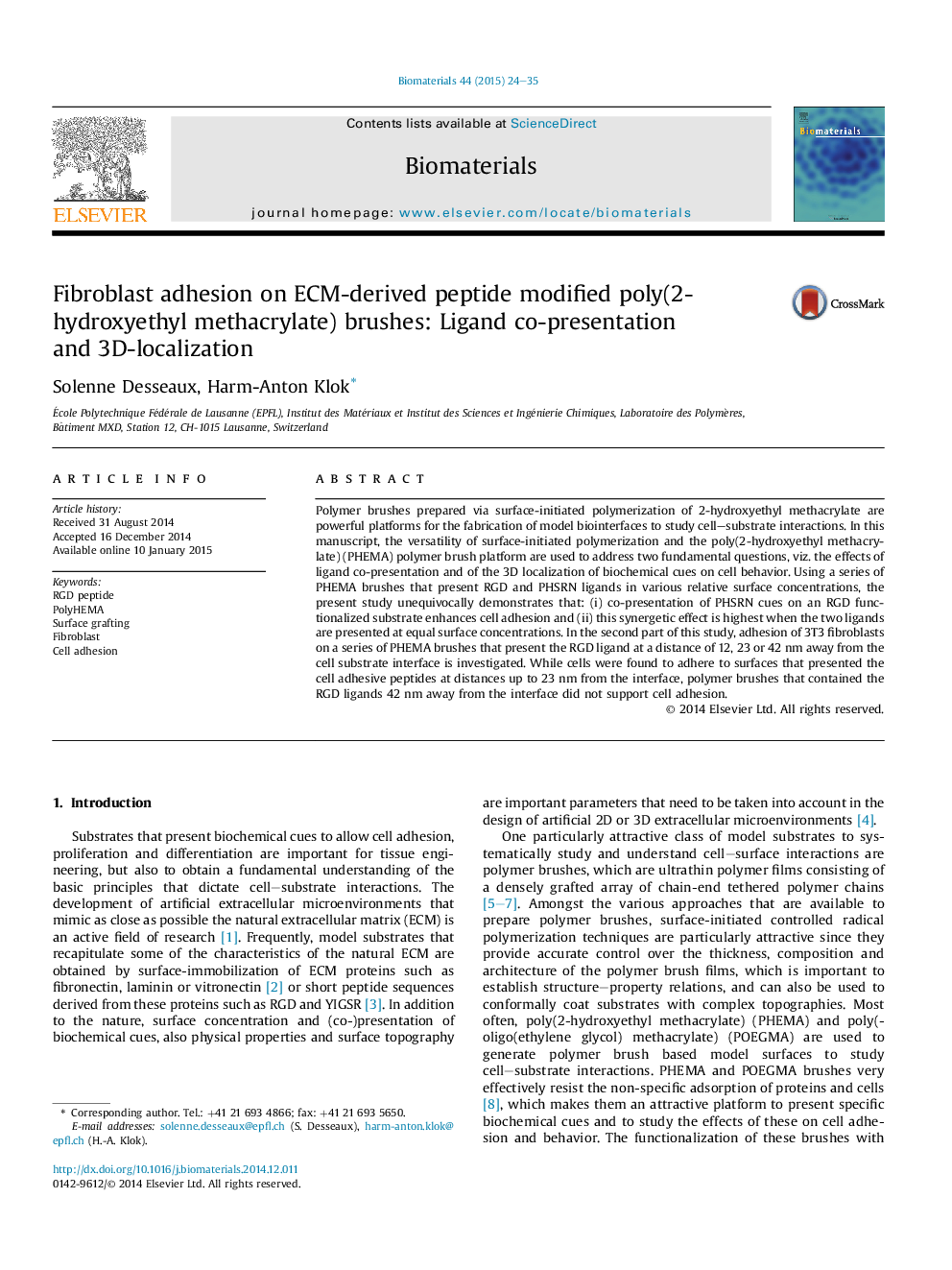| کد مقاله | کد نشریه | سال انتشار | مقاله انگلیسی | نسخه تمام متن |
|---|---|---|---|---|
| 6486221 | 422 | 2015 | 12 صفحه PDF | دانلود رایگان |
عنوان انگلیسی مقاله ISI
Fibroblast adhesion on ECM-derived peptide modified poly(2-hydroxyethyl methacrylate) brushes: Ligand co-presentation and 3D-localization
دانلود مقاله + سفارش ترجمه
دانلود مقاله ISI انگلیسی
رایگان برای ایرانیان
کلمات کلیدی
موضوعات مرتبط
مهندسی و علوم پایه
مهندسی شیمی
بیو مهندسی (مهندسی زیستی)
پیش نمایش صفحه اول مقاله

چکیده انگلیسی
Polymer brushes prepared via surface-initiated polymerization of 2-hydroxyethyl methacrylate are powerful platforms for the fabrication of model biointerfaces to study cell-substrate interactions. In this manuscript, the versatility of surface-initiated polymerization and the poly(2-hydroxyethyl methacrylate) (PHEMA) polymer brush platform are used to address two fundamental questions, viz. the effects of ligand co-presentation and of the 3D localization of biochemical cues on cell behavior. Using a series of PHEMA brushes that present RGD and PHSRN ligands in various relative surface concentrations, the present study unequivocally demonstrates that: (i) co-presentation of PHSRN cues on an RGD functionalized substrate enhances cell adhesion and (ii) this synergetic effect is highest when the two ligands are presented at equal surface concentrations. In the second part of this study, adhesion of 3T3 fibroblasts on a series of PHEMA brushes that present the RGD ligand at a distance of 12, 23 or 42Â nm away from the cell substrate interface is investigated. While cells were found to adhere to surfaces that presented the cell adhesive peptides at distances up to 23Â nm from the interface, polymer brushes that contained the RGD ligands 42Â nm away from the interface did not support cell adhesion.
ناشر
Database: Elsevier - ScienceDirect (ساینس دایرکت)
Journal: Biomaterials - Volume 44, March 2015, Pages 24-35
Journal: Biomaterials - Volume 44, March 2015, Pages 24-35
نویسندگان
Solenne Desseaux, Harm-Anton Klok,